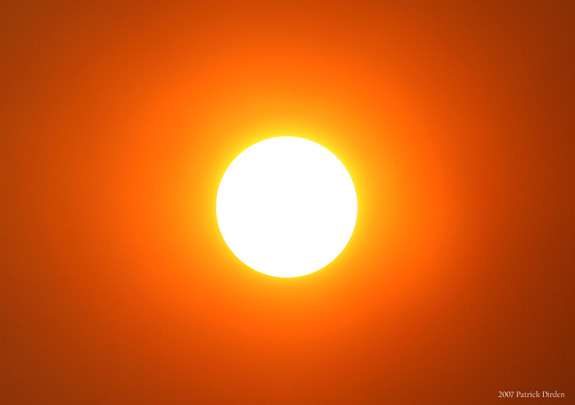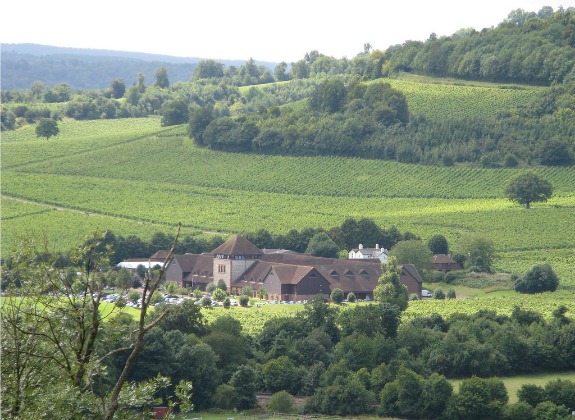Where Has the Heat Been Most Oppressive This Summer?
This year is shaping up to be among the warmest on record—not only in the United States but worldwide. Here are a few of the hottest hotspots
Friend or foe? The sun, shown here above Lassen County, California, has brought fires, drought and intolerable heat to much of the world this summer. Photo courtesy of Flickr user SP8254.
Headlines this summer have announced 2012 as America’s hottest year on record, with particularly brutal heat waves striking the Northeast, and stunning temperature highs all but cooking Death Valley and other Southwest desert hotspots.
What many papers have not pointed out, however, is that 2012 is shaping up to be among the warmest on record worldwide. In June, across the planet, the average land temperature was the highest since such record-keeping began in 1880. And factoring in ocean temperatures, the month of June was the fourth hottest June since 1880. The same data source, from the National Oceanic and Atmospheric Administration, shows that May 2012 was comparably scorching in the Northern Hemisphere. The global report for July is not yet available, but the national analysis is in—and the month burned like never a July has before. The lower 48 states’ 31-day temperature average of 77.6 degrees Fahrenheit made July 2012 the warmest single month ever recorded in America since national records began in 1895. Also during July, fires across America burned more than two million acres. Now, it’s August, and while we’re eagerly awaiting the next monthly summary, we don’t need a government climatologist to tell us that it’s broiling out there. Fires are sweeping the country, and farmers are grumbling about a drought. Global warming? It feels that way.
Following are a few of the hottest of hotspots where recent weather extremes are making 2012 a summer to write home about.
Spain. I was there, pedaling a bicycle through the Spanish interior in late June, and I almost cooked. The land was erupting in flames. Distant plumes of smoke marked brush and forest fires while helicopters in response came and went. Nights were balmy and comfortable, and mornings weren’t intolerable—but by noon each day the mercury edged past 100, and from 3 p.m. until about 7, the heat made riding a bike impossible. For four days I baked, spending one miserable afternoon on La Ruta de Don Quixote, a pathetic gravel trail through the scrub and desert, and itself the subject of a feeble tourism marketing campaign. Signage was poor and of water there was none. Windmills towered above me on a low ridge—but there was not a shade tree to be found. Relief came two days later, on the 26th, when, at last, I rolled into the air-conditioned terminal of Madrid-Barajas International Airport. June 2012 in Spain would clock out as the fourth-hottest Spanish June since 1960. The day I got out of that oven, temperatures peaked, reaching 111 degrees Fahrenheit in Cordoba.

The author’s bike bakes in 105-degree heat in Spain, on June 24, during a long, dry and waterless day on La Ruta de Don Quixote. Photo by Alastair Bland.
Death Valley. On July 11, the temperature hit 128 degrees Fahrenheit in Death Valley. Through the night, the mercury crashed more than 20 degrees to 107, which tied the world’s record for the warmest daily low, and the 24-hour average for the same day was a world record 117.5 degrees. Just four days later, scores of ultramarathoners embarked on the annual 135-mile Badwater foot race, which leads from 282 feet below sea level, where asphalt can get hot enough to melt rubber, to 8,360 feet above, at Whitney Portal. And while the race is considered one of the most brutal competitions in the world, climbing almost two miles straight up from the aptly named Furnace Creek, starting point of the race, may be about the surest way to beat—or simply escape—the heat of Death Valley.
Austria. Since the country began keeping records in 1767, Austria recorded its sixth-hottest June this year. On June 30, temperatures maxed out at 99.9 degrees Fahrenheit in both the capital city of Vienna and in German-Altenburg, Nope.
Canary Islands. Recent soaring temperatures, preceded by one of the driest Spanish winters in seven decades, have sparked raging fires on the islands of Tenerife and La Gomera, of the Canary Islands. Four thousand residents have been evacuated and British tourists have been asked to report to the Foreign Office as firefighters struggle to control the flames. Eight fires were recently burning on Tenerife and ten on La Gomera, where the inferno has threatened Garajonay National Park, a Unesco World Heritage site containing prehistoric woodland dating back 11 million years. Authorities report that the La Gomera blazes may be the result of arson.
The Arctic. If it looks freezing, and it feels freezing, it still might be warmer than ever—and in the high Arctic this summer, the sea ice has shrunk to historic lows. Though July’s ice cap cover was up slightly from last year, it was the second lowest recorded by NASA’s satellite monitoring program for polar ice extent. But the ice has been melting in the past 30 days, and now the square mileage of sea ice—2.52 million—is the lowest ever recorded for the month of August.
Lassen Volcanic National Park. A fire that broke out on July 29 in the California park has since scorched 24,000 acres of forest. A recent article predicted that the fire might be contained by the final days of August. The main highway through the park and over the mountain—a living volcano and no stranger to heat and fire—has been closed, and numerous homes around the park are threatened. Elsewhere throughout California, Idaho, Oregon and Washington, fires have burned half a million acres of countryside, all of it parched by summer heat. In Redding, California, for instance, at the north end of the Sacramento Valley, summer started early, with the temperature reaching 102 on the last day of May. Twelve days in July were hotter than 100 degrees, and only four days in August so far have been less than triple digits. On August 12, the temperature reached 112.
In Related News:
Bearing the Heat. Across the United States, hungry black bears, facing a heat-induced food shortage, have resorted to breaking and entering to meet their daily caloric demands. With berries and other food forage shriveled by high temperatures, the animals have been raiding trash bins, cars and cabins with unprecedented frequency. In New York State, one black bear reportedly broke into a minivan stashed with goodies. When the door closed behind it, the bear became trapped and, in its efforts to escape, shredded the interior of the vehicle. And in June in Aspen, where searing heat has dried up the chokecherry and serviceberry crops, a female black bear with three cubs broke into at least a dozen cars in a guerrilla quest for calories.
Climate Change a Boon to English Tourism. While the subtropics burn, the higher latitudes are starting to feel just right for summer travelers. English officials expect the heat of continental Europe to be a great boon to tourism at U.K. beach towns. A document (PDF) produced by the University of Wales Swansea reports that erratic heat waves are expected to occur with frequency in the future in Europe—and whereas summers under the Greek, Spanish, Majorcan, Corsican and Tuscan suns have historically been regaled as idyllic icons of high-season tourism, replete with vineyards and wine tasting and so many pleasures Mediterranean, experts believe that, increasingly, Britons will stay home during the high season as southern Europe bakes under hotter and increasingly unpleasant summers.
Global Warming at Work? Maybe. Because federal government data like this is darn hard to argue with: “June 2012 also marks the 36th consecutive June and 328th consecutive month with a global temperature above the 20th century average.”
British Winemakers Say “Cheers” to Climate Change. The unfurling story of Southern England’s new and growing wine industry also seems to leave little doubt that global warming is real. More than 400 wineries are now producing good whites and reds in what scientists assure is a steadily warming region—one which they say warmed by 3 degrees Fahrenheit from 1961 to 2006. Don’t believe them? Then just look at the vines, which are thriving where 30 years ago winemakers say they couldn’t produce decent fruit. Sure: Data can get goofed—but grapes don’t lie.
/https://tf-cmsv2-smithsonianmag-media.s3.amazonaws.com/accounts/headshot/Off-Road-alastair-bland-240.jpg)


/https://tf-cmsv2-smithsonianmag-media.s3.amazonaws.com/accounts/headshot/Off-Road-alastair-bland-240.jpg)